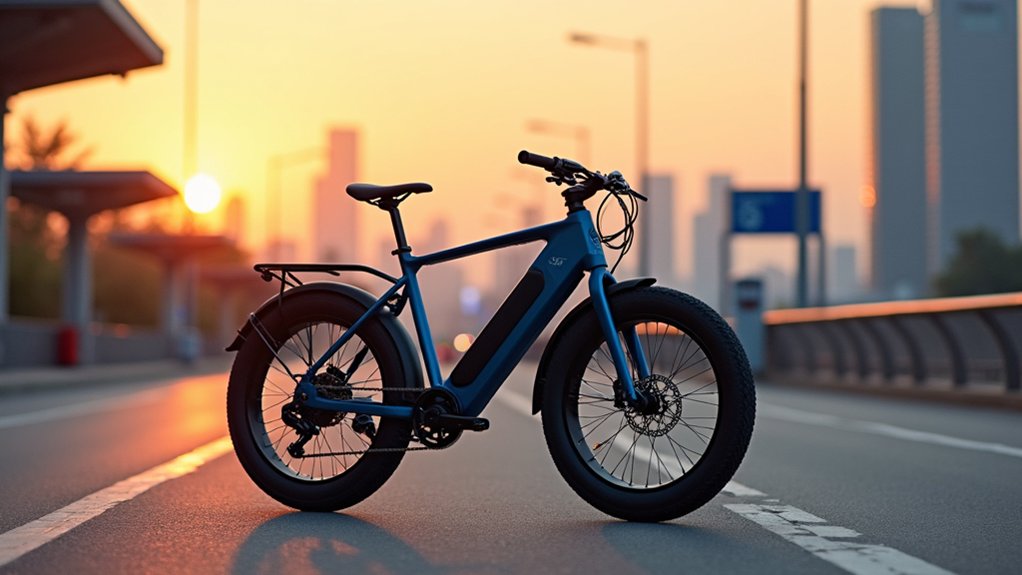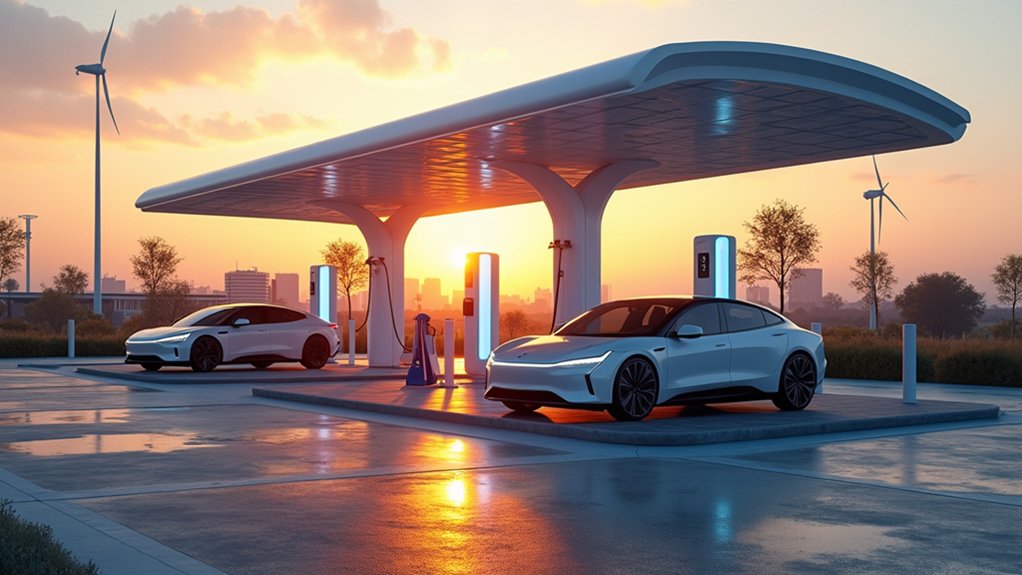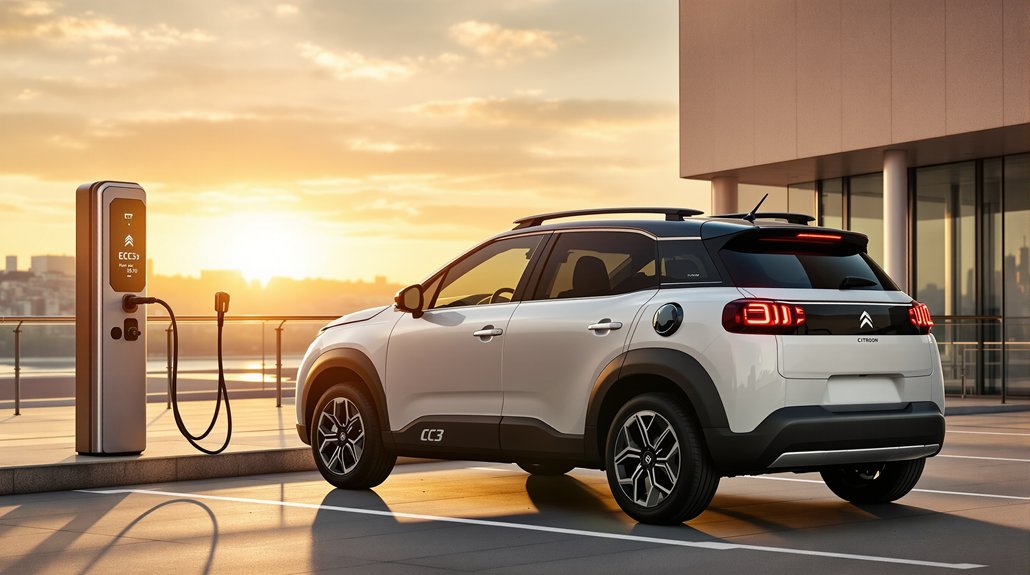Electric bikes are revolutionizing urban mobility through efficient, sustainable transportation solutions. With 75% of U.S. trips under 10 miles, e-bikes achieve 80% of automobile efficiency while requiring minimal infrastructure. Advanced features include smart connectivity, GPS tracking, and extended-range batteries that enhance the riding experience. The technology could eliminate 8 million vehicles from U.S. roads alone, while promoting physical activity and reducing emissions. These innovations represent just the beginning of the e-bike transformation.

How are electric bikes reshaping the landscape of urban mobility? The data paints a compelling picture, with e-bikes demonstrating the potential to replace a significant portion of urban trips, considering that 75% of U.S. journeys fall under 10 miles.
These two-wheeled power-assisted vehicles are achieving remarkable mobility energy productivity, matching up to 80% of automobile efficiency in urban settings while requiring substantially less infrastructure. Solar power charging capabilities make e-bikes an even more sustainable transportation option.
The environmental impact of e-bike adoption cannot be overstated. Conservative estimates suggest that widespread e-bike integration could eliminate 8 million vehicles from U.S. roads and an impressive 40 million in India, dramatically reducing urban carbon emissions.
This transformation is already visible in cities that have embraced bike-centric development, where dedicated lanes and secure parking facilities are becoming standard features of urban planning. The market has seen tremendous growth with 600,000 ebikes sold in the U.S. in 2020.
The economic advantages of e-bikes present an equally persuasive case for their adoption. With minimal operational costs and reduced maintenance requirements compared to conventional vehicles, e-bikes offer a pragmatic solution to urban transportation challenges. The cost effectiveness of e-bikes makes them an increasingly attractive alternative to traditional vehicles.
Forward-thinking municipalities are further accelerating adoption through targeted subsidies and incentives, making these vehicles increasingly accessible to diverse populations.
Technological evolution continues to enhance e-bike capabilities. Modern units feature advanced battery systems, smart connectivity options, and sophisticated motor designs that extend range while improving reliability.
The integration of GPS tracking, mobile applications, and enhanced security features has transformed these vehicles into connected mobility solutions for the digital age.
The health implications of e-bike adoption extend beyond individual benefits. While riders enjoy the advantages of assisted pedaling that enables longer journeys without excessive fatigue, urban communities benefit from reduced congestion and improved air quality.
The pedal-assist technology strikes an ideal balance between physical activity and practical transportation, addressing the growing concerns of sedentary urban lifestyles.
As cities continue to evolve, e-bikes are emerging as a vital component of sustainable urban mobility strategies, offering a rare combination of environmental consciousness, economic efficiency, and public health benefits.
Frequently Asked Questions
How Long Does an E-Bike Battery Typically Last Before Needing Replacement?
E-bike batteries typically last 3-5 years before requiring replacement, though premium models can extend to 7-10 years.
Performance depends heavily on charging cycles, with most batteries rated for 500-1,000 cycles. A well-maintained battery delivers approximately 25,000 miles of total usage.
Key factors affecting longevity include charging habits, usage intensity, environmental conditions, and manufacturing quality.
Regular maintenance and proper storage greatly extend battery life.
Can I Ride an Electric Bike in the Rain?
Modern e-bikes can be safely ridden in rain, thanks to water-resistant components rated IPX4 or higher.
However, riders should exercise caution and follow key precautions: reduce speed, increase braking distance, and avoid deep puddles. Quality fenders and waterproof gear enhance the experience.
Post-ride maintenance is essential – thoroughly dry the bike, particularly electrical connections, to prevent moisture damage and maintain peak performance.
Do I Need a Special License to Operate an E-Bike?
Most e-bike riders don’t need a special license, as Class 1 and 2 e-bikes (up to 20 mph) are typically regulated like traditional bicycles.
However, Class 3 e-bikes, capable of 28 mph, may require licensing in certain states such as Alaska, Hawaii, and New Jersey.
Local jurisdictions might have additional requirements, so checking city ordinances is essential.
Riders should note that e-bikes exceeding 28 mph often fall under moped or motorcycle regulations.
What Happens if the Battery Dies While I’m Riding?
When an e-bike battery dies, the bike reverts to functioning as a standard bicycle. The rider must pedal manually without power assistance, which requires more physical effort, especially on inclines.
While safety systems remain intact, the added weight of the motor and battery (typically 15-20 pounds) makes pedaling more challenging.
For emergencies, carrying a spare battery or knowing nearby charging locations is recommended. Some riders opt to push their bikes when battery depletion occurs on difficult terrain.
Are Electric Bikes More Expensive to Maintain Than Regular Bikes?
Electric bikes typically incur higher maintenance costs than traditional bicycles.
Annual maintenance for e-bikes averages $300-$400, compared to $200-$300 for conventional bikes. The key difference lies in specialized components: batteries require replacement every 5-10 years ($350-$1,000), electrical systems need periodic updates, and drivetrain parts wear faster due to increased weight and speed.
Regular tune-ups ($75-$120) and minimal electricity costs ($10-$30 annually) add to overall expenses.









